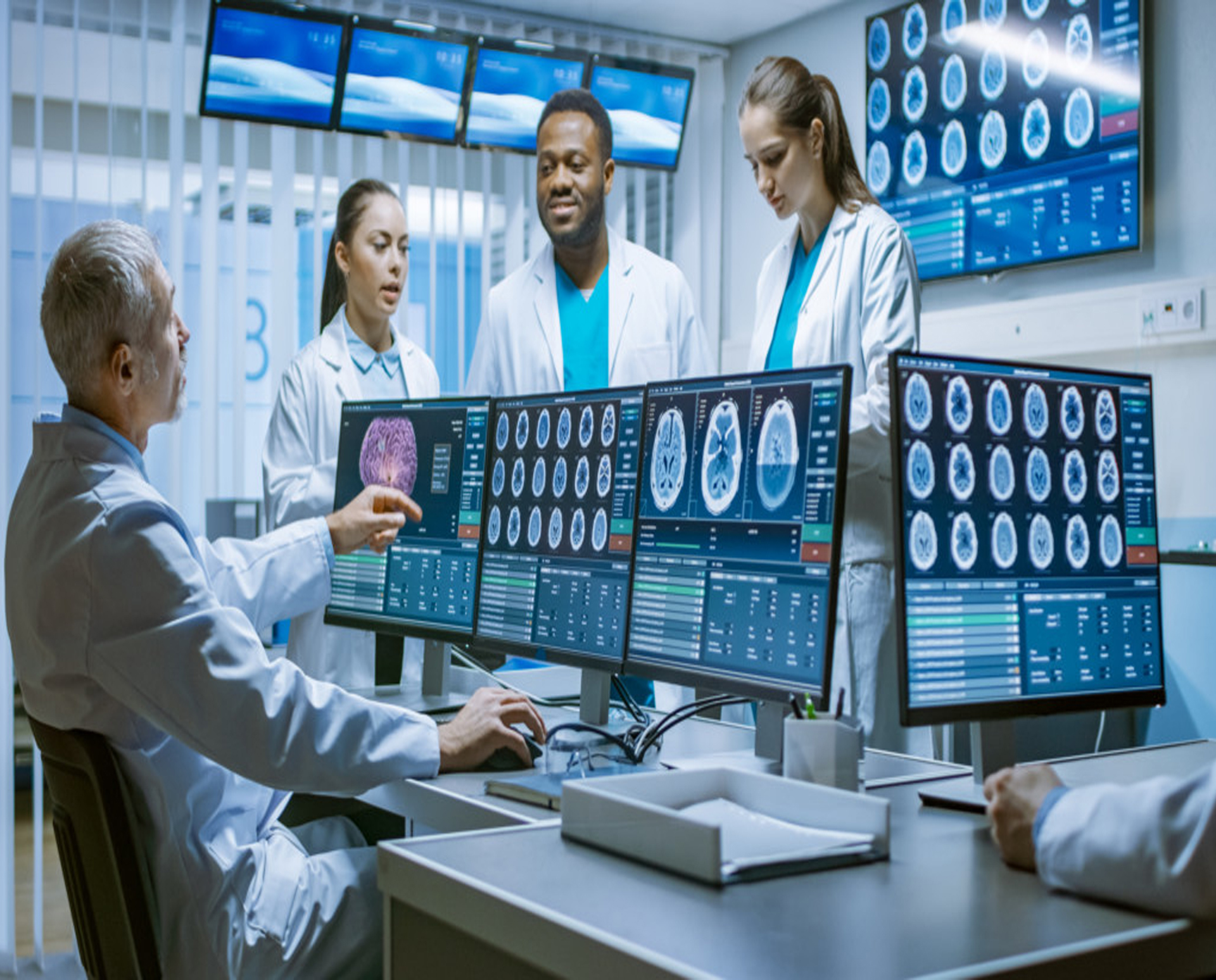1. Improved Access to Specialist Care
Addressing Geographic Disparities
In many rural or underserved areas, access to radiology specialists is often limited. Teleradiology helps bridge this gap by allowing hospitals to transmit images to experienced radiologists located anywhere in the world. This access is crucial for patients who may otherwise have to travel long distances for expert evaluations, ensuring that timely diagnoses and treatment plans are established, particularly in emergency situations where every minute counts.
Expanding Expertise
By tapping into a broader pool of radiologists, hospitals can also offer their patients access to specialized expertise that may not be available locally. For instance, pediatric radiologists can review images from children’s hospitals, or oncological specialists can provide insights on cancer-related imaging studies, leading to better-informed treatment options.
2. Enhanced Workflow Efficiency
Streamlined Processes
Teleradiology significantly streamlines hospital workflows by facilitating faster image transmission and interpretation. With digital platforms, images can be shared instantly, allowing radiologists to work efficiently without being physically present. This remote capability reduces delays in image review and diagnosis, enabling quicker decision-making.
Balancing Workloads
Radiologists can manage their workloads more effectively when they can work remotely. They can balance their caseloads based on availability and expertise, ensuring that more complex cases are handled by specialists. This flexibility helps minimize backlogs and reduces patient wait times for results, contributing to a more efficient hospital environment.
3. 24/7 Coverage
Around-the-Clock Services
One of the most significant advantages of teleradiology is the ability to provide continuous coverage. Hospitals can collaborate with radiology groups across different time zones, ensuring that a qualified radiologist is always available to review images, no matter the hour. This is particularly beneficial for emergency departments, where rapid decision-making is crucial for patient safety and care.
Handling Increased Demand
The increased demand for radiological services, particularly in emergency situations, can strain hospital resources. Teleradiology helps hospitals manage this demand by providing immediate access to radiologists, ensuring that patients receive timely evaluations and care.
4. Cost-Effectiveness
Financial Efficiency
Implementing teleradiology can be a financially savvy solution for hospitals, especially those unable to hire full-time radiologists. By outsourcing image interpretation, hospitals can save on salaries, benefits, and overhead costs associated with in-house staff. This cost-effectiveness allows hospitals to reallocate resources to other critical areas of patient care.
Reducing Infrastructure Costs
Additionally, teleradiology reduces the need for extensive on-site infrastructure. Hospitals can invest in advanced imaging equipment without the added burden of maintaining a full-time radiology team, further enhancing their financial sustainability.
5. Enhanced Patient Management
Immediate Feedback
Timely access to radiological interpretations allows clinicians to discuss findings with patients during their visits. This immediate feedback can lead to quicker treatment decisions and improved patient engagement. Patients value the efficiency of receiving their results sooner, leading to a more satisfactory healthcare experience.
Personalized Care Plans
With rapid diagnoses, healthcare providers can develop personalized care plans that address patients’ unique needs. This tailored approach not only improves treatment outcomes but also fosters stronger patient-clinician relationships.
6. Quality Assurance and Second Opinions
Improved Diagnostic Accuracy
Teleradiology facilitates the easy acquisition of second opinions. When clinicians are uncertain about a diagnosis, they can send images to specialists for additional reviews. This practice enhances diagnostic accuracy and helps ensure that patients receive the most appropriate care.
Building Trust
Patients often feel reassured knowing that multiple experts have evaluated their cases. This level of scrutiny fosters trust in the healthcare system, making patients more likely to adhere to treatment plans and engage actively in their care.
7. Facilitating Research and Collaboration
Collaborative Research Opportunities
Teleradiology promotes collaboration between hospitals, academic institutions, and research facilities. By sharing access to a broader range of cases and imaging studies, healthcare providers can engage in joint research projects that advance medical knowledge and improve diagnostic techniques.
Innovations in Practice
The ability to analyze diverse cases from various settings can lead to innovations in radiological practices. Hospitals can develop best practices based on collaborative insights, ultimately benefiting patient care on a larger scale.

The Impact of
Teleradiology in Medical
Colleges
Teleradiology is reshaping the educational landscape in medical colleges by facilitating remote access to radiological images for teaching and research purposes. This innovative approach enhances the learning experience for students and residents, improves collaboration, and fosters advancements in medical research. Let’s explore the various ways teleradiology is making a significant impact in medical colleges.
1. Enhanced Learning Opportunities
Access to Diverse Cases
Teleradiology allows medical students and residents to access a wide array of radiological cases from different hospitals and institutions. This exposure to diverse cases, including rare conditions and complex imaging studies, enriches their learning experience and helps them develop critical diagnostic skills.
Interactive Learning
With teleradiology, educators can incorporate real-time case discussions into their curriculum. Instructors can present live cases during lectures or seminars, encouraging students to engage in critical thinking and collaborative learning. This interactive approach not only enhances understanding but also prepares students for real-world clinical challenges.
2. Facilitating Remote Education
Flexible Learning Environments
Teleradiology supports remote learning, which has become increasingly important in today’s educational landscape. Students can participate in virtual classes, accessing imaging studies and expert lectures from anywhere. This flexibility ensures that students receive quality education, regardless of geographical constraints.
Simulation-Based Learning
Medical colleges can utilize teleradiology for simulation-based education, where students analyze real cases remotely. This method allows learners to practice their diagnostic skills in a controlled environment, gaining confidence before entering clinical settings.
3. Collaboration and Research Opportunities
Inter-Institutional Collaboration
Teleradiology fosters collaboration between medical colleges and hospitals. Students and faculty can share cases and insights with other institutions, enhancing their educational resources and contributing to joint research initiatives. This collaboration helps advance medical knowledge and develop innovative diagnostic techniques.
Engaging in Research Projects
Access to a broader range of imaging studies enables medical colleges to engage in research projects that require diverse case analysis. Students can participate in research related to diagnostic accuracy, treatment outcomes, and advancements in radiological technology, enriching their academic experience.
4. Quality Assurance in Education
Standardized Teaching
Teleradiology allows for standardized teaching materials and case presentations across different medical colleges. Educators can develop consistent curricula that leverage high-quality imaging studies, ensuring that all students receive comprehensive and uniform training in radiology.
Mentorship and Guidance
Teleradiology facilitates mentorship opportunities for students. Experienced radiologists can review cases submitted by students or residents and provide constructive feedback, helping them refine their diagnostic skills and deepen their understanding of complex imaging studies.
5. Preparing Students for Future Careers
Exposure to Cutting-Edge Technology
By integrating teleradiology into their training, medical colleges prepare students for the realities of modern healthcare. Familiarity with telehealth technologies and remote diagnostics will be essential as students enter the workforce, where such tools are increasingly prevalent.
Building Professional Networks
Teleradiology opens avenues for students to connect with radiology professionals and specialists globally. These networking opportunities can lead to future collaborations, internships, and job placements, enhancing students’ career prospects.
6. Improving Patient Care Knowledge
Understanding Patient-Centered Care
Through exposure to a variety of cases, students gain insights into patient management and the importance of timely diagnoses. Understanding how radiological interpretations impact treatment decisions fosters a patient-centered approach to care.
Interdisciplinary Learning
Teleradiology encourages collaboration between different medical disciplines. Students can learn how radiologists work alongside clinicians, surgeons, and other specialists to provide comprehensive patient care, emphasizing the importance of teamwork in healthcare.
The Impact of
Teleradiology in Clinics
Teleradiology is significantly changing how clinics operate by enabling the remote transmission and interpretation of radiological images. This innovative approach offers numerous benefits that enhance patient care, improve operational efficiency, and expand access to expert consultations. Let’s explore the various ways teleradiology is making a difference in clinic settings.
1. Immediate Access to Specialist Care
Timely Consultations
Teleradiology allows clinics, particularly smaller practices, to quickly send images—such as X-rays, CT scans, and MRIs—to radiologists for interpretation. This immediacy ensures that patients receive timely diagnoses, which is especially critical in urgent care scenarios.
Expertise at Your Fingertips
By utilizing teleradiology, clinics can access a broader network of radiology specialists. This means that patients can benefit from expert opinions without the need to travel to larger medical facilities, thereby improving overall patient experience and outcomes.
2. Enhanced Workflow Efficiency
Streamlined Processes
Teleradiology streamlines workflows within clinics by reducing the time between image acquisition and interpretation. With digital transmission, images can be sent and reviewed almost instantaneously, which helps clinics operate more efficiently and manage their patient flow effectively.
Reduced Backlogs
By outsourcing radiological interpretations, clinics can reduce the backlog of cases waiting for review. This efficiency minimizes wait times for patients, allowing clinics to provide faster service and improve patient satisfaction.
3. Cost-Effectiveness
Financial Savings
Implementing teleradiology can be a cost-effective solution for clinics, especially those that do not have the resources to hire full-time radiologists. By outsourcing these services, clinics can save on staffing and operational costs while still offering high-quality care.
Infrastructure Efficiency
Teleradiology reduces the need for extensive on-site radiology infrastructure. Clinics can invest in advanced imaging technology without the added financial burden of maintaining a full-time radiology team, freeing up resources for other critical areas of patient care.
4. Improved Patient Management
Faster Diagnoses
With rapid access to radiological interpretations, clinicians can discuss findings with patients during the same visit. This immediate feedback allows for quicker treatment decisions, enhancing patient engagement and satisfaction.
Comprehensive Care Plans
Timely diagnoses enable healthcare providers to develop personalized care plans that cater to individual patient needs. This targeted approach not only improves treatment outcomes but also fosters stronger relationships between patients and their healthcare providers.
5. Quality Assurance and Second Opinions
Enhanced Diagnostic Accuracy
Teleradiology facilitates the easy acquisition of second opinions. If a clinician is uncertain about a diagnosis, they can send images to specialists for additional review. This practice improves diagnostic accuracy and ensures that patients receive appropriate care.
Building Patient Trust
Patients often feel reassured knowing that their images have been reviewed by multiple experts. This level of scrutiny fosters trust in the healthcare system, encouraging patients to adhere to treatment recommendations and remain engaged in their healthcare journeys.
6. Facilitating Interdisciplinary Collaboration
Improved Communication
Teleradiology promotes better communication between various healthcare providers. Clinicians can easily share imaging results with specialists, ensuring a collaborative approach to patient care that leads to more comprehensive treatment strategies.
Holistic Patient Care
By integrating teleradiology into their practices, clinics can enhance their interdisciplinary approach. This holistic view of patient care allows for better coordination among healthcare professionals, improving overall patient outcomes.
7. Education and Training Opportunities
Training for Staff
Teleradiology can serve as a valuable educational tool for clinic staff. By reviewing cases with radiology experts, clinicians can gain insights into best practices for image interpretation and patient management, enhancing their skills and knowledge.
Continuous Learning
Access to a broader range of cases allows clinic staff to stay updated on the latest developments in radiology. This ongoing education can lead to improved patient care and more informed clinical decisions.


